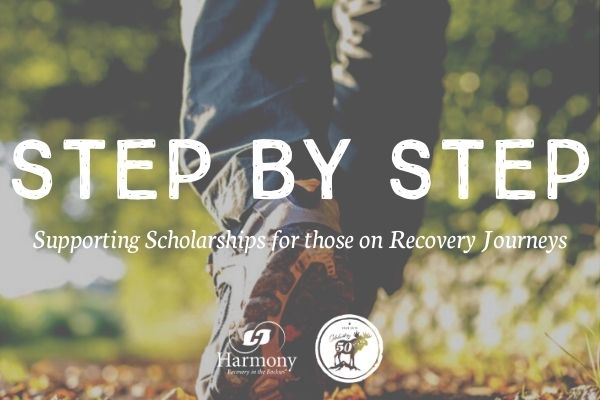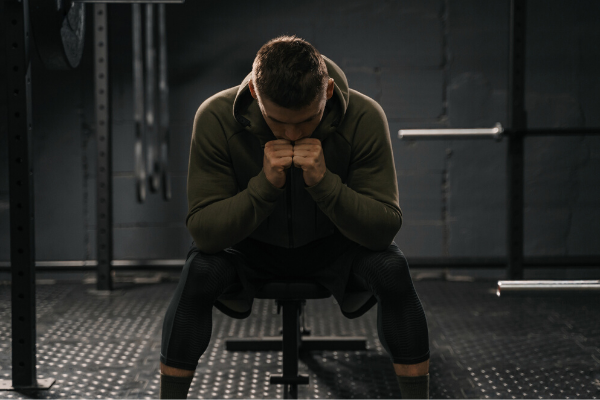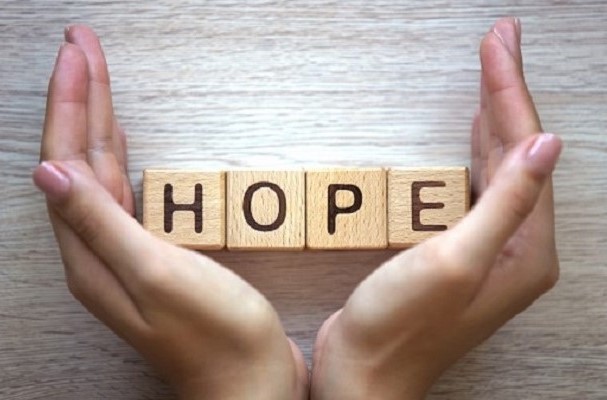The Recovery of Craig K.




2020 has been a tough year for many addiction treatment providers. The COVID-19 pandemic hit the United States in the spring and has made recovery work difficult ever since—for people with addiction and their therapists. “Getting sober during COVID-19 definitely has its challenges,” says Harmony alumna Shayla E. The Harmony Foundation had to implement a number of precautionary measures to ensure staff and client safety.
In October, Harmony suddenly faced another dangerous challenge: the East Troublesome wildfire. As with COVID, the entire Harmony community rose to the challenge.
“Before October 21, the East Troublesome fire had mostly been a nuisance,” reported The Colorado Sun, “burning through dense trees and steadily gobbling up terrain.” Then it suddenly turned into a massive firestorm and on October 22, it began to threaten the Harmony campus.
The leadership team immediately came together for an emergency meeting. “There were also other fires in the area,” remembers Harmony CEO Jim Geckler. “We had carefully monitored the Cameron Peak fire earlier that week, which was unsettling enough. Then the East Troublesome fire jumped the mountain and started to burn on our side on Thursday morning (Oct 22).”
It was time to make a decision. When fire officials issued a voluntary evacuation advisory, Harmony decided to play it safe and evacuate. After the leadership meeting made the call to leave and not wait for a mandatory evacuation order, Geckler explained the situation to the clients and let them know what to bring along.
“We had solid communication between all parties involved and because we had done a lot of preparation and training in the past, we were ready to go within 45 minutes. We packed up the medical center, had a great procedure in place for moving the belongings of clients and how to move medications safely. By 12:30 we were lined up caravan-style and ready to go.”
Everything went seamlessly because everybody communicated and everybody knew what they were supposed to do. “Strong communication between the leadership team, the staff, and the clients, as well as the ability of people to make the necessary decisions, allowed us to move forward quickly,” says Geckler.
The destination was a hotel in Greeley, Colorado. With the support of staff at the DoubleTree by Hilton Greeley at Lincoln Park, Harmony was able to successfully relocate all clients and continue to provide them with quality treatment in a safe, welcoming environment.
When Harmony’s chief marketing officer Gina de Peralta Thorne called ahead from the road, the only questions were ‘what do you need?’ and ‘when do you need it?’ “I told them we needed 28 rooms and conference space and that we were 20 minutes out,” remembers Thorne. “They were just remarkable at giving us what we needed to keep clients safe in their recovery. We even used the situation in therapy, discussing how the environment in the hotel was very different from the Harmony campus and how that worked for them.”
The medical team had to quickly build a makeshift detox facility in one of the rooms with an ironing board as a reception desk.
“We managed in an emergency setting,” says Jim Geckler. “I’m proud to say we had uninterrupted client care, every single decision throughout the evacuation was made around client care. It was inspiring to see how people rose to the occasion.”
“Our client-focused culture is collaborative. Over the past seven years or so, we worked diligently to integrate better with other care providers in Colorado,” says Geckler. “We make sure we’re there when they need us and there wasn’t a moment when we didn’t feel supported by others. I received lots of text messages inquiring whether we’re okay, some of them just saying let me know what you need—that made it manageable for us. We had deliveries every day of treats, bottled water, and games. People kept asking how can we be of assistance?”
Once in place in the hotel, the focus was on keeping clients safe. “Usually our patients are in a safe, relatively controlled environment but near the hotel, we had locations where people do drug deals and some clients told us the park was a trigger for them,” remembers Gina Thorne.
Even though the hotel was safe from the wildfire, the Harmony team now had to contend with other dangers. “There was a bar in the hotel, for example, and we had to make sure clients would not be able to order alcohol from their rooms,” explains Thorne. “But the hotel staff learned quickly to work with our unique population. There was never any negative reaction to our clients, the staff was gracious and courteous, they really bent over backward to make sure we got what we needed.”
Again, the open environment was used for therapeutic effect. “We talked about it all the time,” says Geckler. “We made the experience a celebration and congratulated clients on a regular basis. We talked with them and made sure they understood the exceptional circumstances.”
Geckler is convinced that this group of clients will have an exceptional recovery because they are connected in ways other people are not. “It was a bonding experience, and the clients have really embraced it.”
Harmony stayed in Greeley for a whole week, finally returning to Estes Park on October 29. “We now have faced two unbelievable situations this year and we never considered shutting Harmony down,” says Geckler. “Our role is to be of service to our clients who are looking for help—we couldn’t just abandon them. We were able to keep stability for our clients and we were able to celebrate their achievements under difficult circumstances. Everybody stepped up and simply asked what they can do to help. In years to come, I will look back with pride on what we accomplished during this fire emergency.”





Jessica Joiner, LCSW, LAC, has over a decade of experience working with those suffering from addiction, complex trauma, and co-occurring disorders. She uses her experience along with the extensive skills gained to address the many issues that arise for athletes.
In her workshop hosted by Harmony Foundation, Joiner discussed the prevalence of substance misuse among athletes, various ways of identifying “red flags,” and evidence-based interventions that can be helpful in combating the misuse of drugs and alcohol.
As Joiner explained, there are three main reasons athletes misuse substances: pain resulting from injuries, stress from incessant pressure to win, and the desire to enhance performance artificially. Over the years and decades, these reasons have stayed the same but the drugs involved are now more sophisticated than ever, with more options.
The statistics paint a grim picture. Substance misuse is prevalent in high school: approximately 19 percent of males and 14 percent of females binge drink in high school. 21 percent of teens use marijuana and up to 6.6 percent have used performance-enhancing drugs (PEDs).
It gets worse in college where 42 percent of students admit to binge drinking, 28 percent use cannabis, and around 11,000 NCAA athletes admit to taking PEDs. There is a strong correlation between concussions and alcohol use. “Having a concussion is actually predictive for alcohol use,” said Joiner. “If a high school student is entering college with a history of concussion, and we know about the correlation, we could put some measure in place to intervene before things get out of control. We don’t want them to get overwhelmed by the pressure of performing and the grades required to continue.” It’s much better to support them on the front end before things get out of hand.
Should players get drafted into the National Football League, the pain from injuries, the pressure to win, and the temptation to use PEDs get even worse. In the NFL, 51 percent of players use opioids and 71 percent of those athletes admit to misusing them. Many of the pills are not prescribed by medical doctors: 68 percent say they got them from other sources.
It takes only a few days to get addicted to opioids, Joiner warned, and professional athletes have easy access. Professional athletes tend to play through the pain and then “fix it” with opioids and other substances after the game, putting themselves at risk for greater injury and addiction.
Joiner then went over the possible consequences of such risky behavior, which include the impact on performance, health, relationships, and career—and in the worst-case scenario, death.
While substances were initially taken to enhance or maintain performance, escalating use will eventually compromise performance and wreak havoc with the athlete’s health. As is the case for all people with substance use disorder, addiction has “a definite negative impact on relationships.” If there is no intervention and treatment, players may end up with legal problems, a league suspension, or just get kicked off their team.
There are many examples of athletes falling into this trap. Former Boston Celtic Chris Herren struggled with substance misuse for much of his NBA career. While playing for the Celtics, Herren started to use opioid painkillers. In December 2007, he was charged with possession of heroin in Rhode Island and in the following June, Herren overdosed on heroin in Fall River, Massachusetts. According to the attending paramedics, he was clinically dead for 30 seconds.
Abby Wambach—widely considered the best female soccer player ever—was arrested for driving under the influence in 2016. Following the incident, Wambach published an autobiography revealing that she had misused prescription drugs and alcohol for many years.
After going into recovery, Herren started raising awareness of drug addiction and has now spoken to over one million students, athletes, and community members, promoting frank discussions about substance use disorder and wellness.
In the webinar, Joiner, too, stressed the importance of prevention and early intervention to attack this problem. Prevention should include educating everybody involved to raise awareness of mental health issues that often drive substance misuse, so parents, teachers, and coaches learn to recognize red flags. “From the outside, it often looks like they have everything”, explained Joiner. That’s why depression and anxiety disorders are often overlooked. Testing, screening and other interventions should be used in a supportive, not punitive way.
“We should stop just being reactive and be more proactive,” Joiner said. Coaches and trainers of athletes should not wait for a crisis to unfold and athletic programs should provide adequate mental health services for players (and other students). Treatment should not be perceived as punishment for bad behavior but as a concerted effort to heal psychological problems. “We need effective collaboration between therapists, doctors, school departments, and the community that facilitates integrated care,” Joiner said. Currently, too many people fall through the cracks because many athletic departments don’t provide nearly enough mental health professionals. Ultimately, a culture shift is required: our society’s approach to athletic injuries and mental illness needs to change significantly and we need more trauma-informed and stigma-free care—and not only for athletes.

Colorado drug addiction program is celebrating it’s 50th Anniversary with a new intensive outpatient program with a unique twist and a Fort Collins Recovery Center. Gala celebrating milestone was held Oct 25 in Denver with special guest Carnie Wilson of Wilson Phillips. Continue reading “Harmony Foundation Announces Second Major Expansion During Its 50th Year”

Harmony Foundation, a Colorado-based addiction treatment center, has selected the National Association of Addiction Treatment Providers (NAATP) for its Dorothy Dorman Service Award. The award was established to honor Harmony Foundation’s long-time CEO at her retirement. The award recognizes people or organizations sharing the same integrity and dedication for addiction treatment solutions as the award’s name bearer.
The award will be presented at Harmony Foundation’s 50th Anniversary Gala in Denver, Colorado on October 25th at the Four Seasons Hotel. Carnie Wilson of Wilson Phillips will be the special guest speaker of this milestone event that commemorates the long and impactful heritage of Harmony Foundation which has positively changed the lives of thousands. Proceeds from this event will benefit scholarships supporting those with the desire, but without the means, to receive the addiction treatment they need. Tickets, as well as sponsorship opportunities, are available to the public at www.harmonyfoundationinc.com/50th.
“NAATP has long been the voice for addiction programs across the country and for decades has led the charge in establishing meaningful ethical standards and protocols for this important treatment category,” stated James Geckler, Harmony Foundation President and CEO. “We wanted to acknowledge their continuing hard work in helping their membership collaborate and better serve their patients.”
Recently NAATP has been active on the national stage supporting the passing of bi-partisan legislation H.R.6 (115thCongress), which contains over 120 separate bills to address the opioid crisis. For the first time, the federal government is examining how individual states are enforcing the Mental Health Parity and Addiction Equity Act (MHPAEA) passed in 2008 and making changes to the antiquated Medicaid limitation on residential treatment based on the number of beds operated by a facility.
NAATP CEO Marvin Ventrell added “The National Association of Addiction Treatment Providers is honored to receive the Harmony Foundation Dorothy Dorman Award on the occasion of Harmony’s 50th Anniversary. Founded nearly a decade before the National Association itself, Harmony was among the first treatment programs to join the association and has since that time supported NAATP as a valued charter member. This speaks volumes about Harmony’s commitment to not just its own patients but the welfare the national addiction recovery community at large. Keep up the good work Harmony and here’s to 50 more years of success.”
About Harmony Foundation
Harmony Foundation is a nonprofit alcohol and drug addiction recovery program that serves in a collaborative and respectful treatment environment. Harmony promotes physical, emotional, and spiritual healing, empowering their clients to embark upon the lifelong journey of recovery. Visit HarmonyFoundationInc.com to learn more.

More than two-thirds of drug overdose deaths in the United States in 2017 involved opioids, according to the Centers for Disease Control and Prevention, escalating an epidemic the CDC says “continues to worsen and evolve.” From 2016 to 2017, opioid-related overdose deaths increased 12 percent overall, surging among all age groups 15 and older.
The CDC report’s recommendations for curbing opioid-related overdose deaths include “increasing naloxone availability, expanding access to medication-assisted treatment, enhancing public health and public safety partnerships, and maximizing the ability of health systems to link persons to treatment and harm-reduction services.”
Naloxone is a medication often used by first responders because it can rapidly reverse opioid overdose. It is an opioid antagonist—it binds to opioid receptors and can reverse and block the effects of other opioids. It can quickly restore normal respiration to a person whose breathing has slowed or stopped as a result of overdosing with heroin or prescription opioid pain relievers.
Medication-assisted treatment (MAT) is used to decrease opioid use, opioid-related overdose deaths, criminal activity, and infectious disease transmission. Medications used for the treatment of opioid use disorder are buprenorphine (Suboxone, Subutex), methadone, and extended release naltrexone (Vivitrol). Some of these drugs are controversial in the recovery community because they are themselves opioids.
The National Institute on Drug Abuse, a US government research institute, clarifies that contrary to what some critics say, “methadone and buprenorphine DO NOT substitute one addiction for another. When someone is treated for an opioid addiction, the dosage of medication used does not get them high–it helps reduce opioid cravings and withdrawal. These medications restore balance to the brain circuits affected by addiction, allowing the patient’s brain to heal while working toward recovery.”
The use of these medications should always be combined with behavioral counseling with the ultimate aim of ceasing all substance misuse.
HOPE – Harmony’s Opioid Programming Experience
Harmony has provided all clients with medication-assisted treatment for many years. This combination of education, counseling, and the use of medication in early recovery is part of the Harmony philosophy. HOPE expands MAT to include medications that alter the physical response to opioids, reduce cravings, and give the patient time to heal from the psychological, social, and spiritual wounds of addiction.
“It’s important to remember that MAT is only a small part of the picture,” says Harmony’s medical director Christopher Reveley. “That is why we call it ‘medication-assisted’ treatment, because by itself it is not the treatment. Used alone it has a low probability of being successful.”
At Harmony, HOPE begins with thorough medical and psychological evaluations. Collaboration with the patient, members of the interdisciplinary team and, when appropriate, family and referral sources, determine the most effective treatment plan. All HOPE clients are invited to participate in weekly support groups led by a professional addiction counselor. These groups address the unique challenges of early opioid recovery, including uncomfortable physical and psychological symptoms, cravings, and strategies to avoid relapse. In this setting, clients support each other and are educated about the process of recovery.
Medication-assisted therapy may help stabilize the patient for these challenges in early recovery. “It gives people an opportunity to step out of the chaos of addiction and consider other ways of being,” says Dr. Reveley. “I never felt that buprenorphine was meant as a lifelong or even long-term solution.” Although there may be exceptions. It all depends on the individual needs of the patient. Reveley remembers a patient who had been on methadone for 46 years. “He tried to taper off a dozen times and relapsed to heroin use every single time. His family was initially very opposed to him being on methadone but eventually they told him ‘this is working, your life depends on it.’ So there are people on either end of the bell curve but in most cases buprenorphine is only a small but important part of the solution.”
Buprenorphine can be an important tool, especially in early recovery from opioid use disorder. The medication offers patients the opportunity to start living a “normal” life, far removed from the drug culture lifestyle they may have been immersed in while using heroin and other opioids. People are dying every day from opioid overdoses, especially in the age of the fentanyl scourge. Buprenorphine may provide the buffer that enables them to launch into sustained recovery. It is a buffer that can save people with addiction from a potentially lethal overdose.
Harmony has been treating addiction for 49 years and HOPE is now offered to all Harmony clients with opioid use disorders. The program involves enhanced medical, counseling, and case management services specifically tailored to meet these clients’ unique needs.
The Harmony care team works closely with clients who choose to include buprenorphine in their treatment strategy. This will typically involve full participation in HOPE and a recommendation for participation in Harmony’s Transitional Care Program (TCP), an intensive, 90 day intensive outpatient program coupled with monitored sober living and medication management by Harmony providers. When clinically indicated or to accommodate client preference, Harmony’s case managers may refer clients to other programs with similar services.
If you or someone you know is struggling with opioid use disorder and needs help, call Harmony at 970-432-8075 and one of our admissions specialists can discuss next steps.